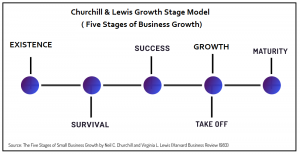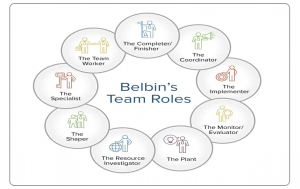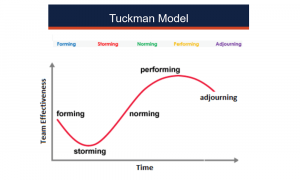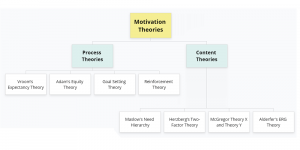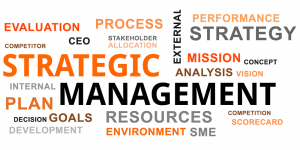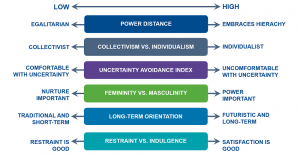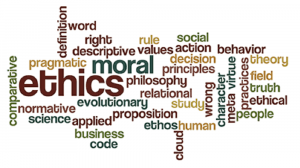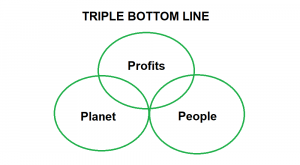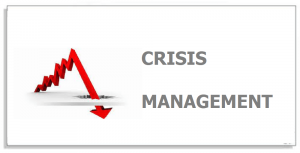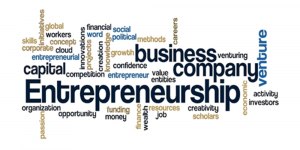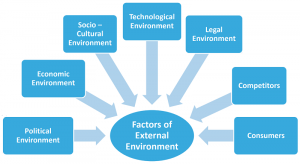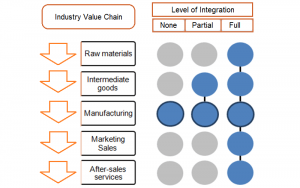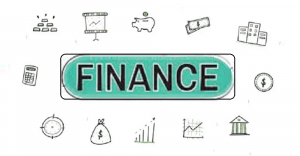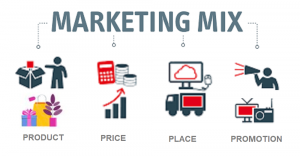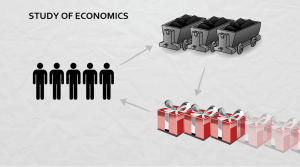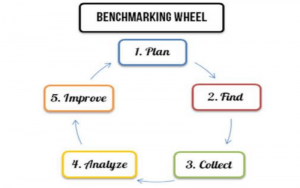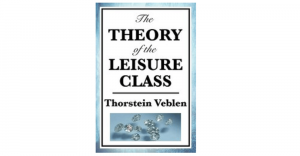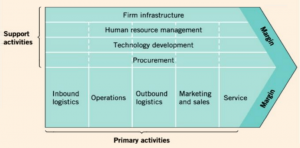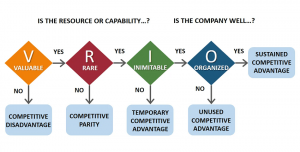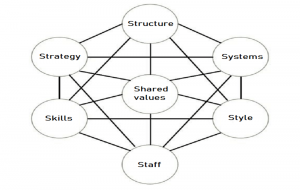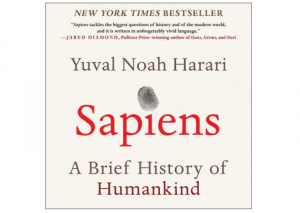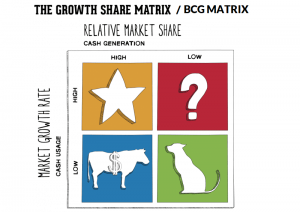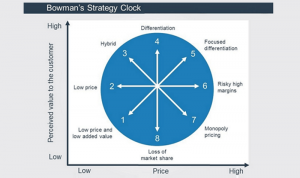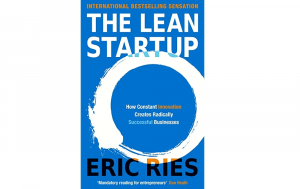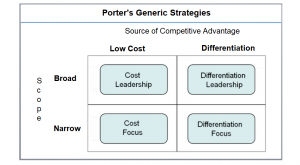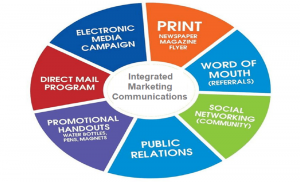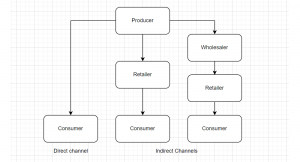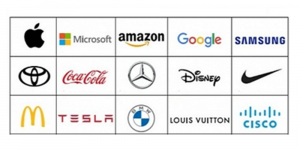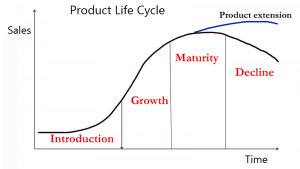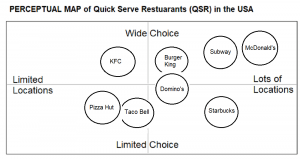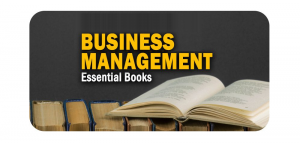The Churchill & Lewis Growth Stage Model is a useful framework that helps analyse what particular stage of growth a small firm is at, and the issues and problems that they need to be aware of – now as well as in the future as the business grows. The five stages of small business growth […]
Belbin’s Team Role Theory
The Belbin Team Roles theory suggests how to select the right mix of people for a team that will help the team succeed. Every person has unique strengths and behaviour that can facilitate the progress of a team. Belbin’s theory identify behavioural strengths and weaknesses of workers at the workplace. Introduction While every firm desires […]
Tuckman’s theory: Various Stages of Group Development
Tuckman Model: Theory to understand the stages of team formation. This model reveals how teams transform as they go from the initial formation towards the completion of the project. You need a team to do take on bigger things and accomplish things faster. However, not every team works at the highest level of efficiency right […]
7 O’s framework of consumer research
The 7 O’s framework of consumer research helps marketing managers understand more about the consumers in the target market. The 7 Os stand for Occupants, Objects, Objectives, Organizations, Operations, Occasions, Outlets. Here’s what they mean. Occupants: Who buys, Who constitutes the market? Objects: What does the market buy? Objectives: Why does the market buy? Occasions: […]
Theories of Motivation: Leading and managing people in organizations
Theories of Motivation: Understand how motivation is used to lead and manage people in organizations. What is Motivation Motivation is basically the intention or reason for an individual’s activities and desires. It stimulates a person to do things or behave in a definite way. All employees work towards achieving organisational effectiveness but they all have […]
Functional Level Strategies
Strategies for different functions of management are known as functional level strategy. Functional Level Strategy is concerned with operational level decision making, called tactical decisions, for various functional areas such as: Marketing Finance Production Logistics Research & Development Human Resource Functional level Managers operate at lowest hierarchical level of strategic management. This level is responsible […]
Hofstede’s Cultural Dimensions Theory
Organizational anthropologist Geert Hofstede is well known for his research studies on social values that suggest that cultures of different nations can be compared in terms of five dimensions. Developed by Geert Hofstede (1984), the cultural dimensions theory ((Hofstede’s Cross Cultural research work)) is a highly recognised framework for cross-cultural communication describing the effects of […]
McDonald’s: Internal External Factors, Marketing, Competition, Strategy
McDonald’s Internal External Factors, SWOT, Porter’s 5 Forces, Strategy, Marketing Mix. About McDonald’s McDonald’s is a fast food chain which originated in America, and was founded by the McDonald brothers Richard and Maurice in California. On a revenue scale, it is the world’s largest restaurant chain, catering to over 69 million customers on a daily […]
Marketing Ethics: Various Concepts
Ethics in marketing promotes transparency, honesty, fairness in marketing. Marketing ethics is what guide companies to do “the right thing” – be it implementing acceptable practices, dealing fairly with customers, complying with law, or be it caring for the community and environment. Companies are free to either develop their own ethical standards or they have […]
Understanding Consumer Culture: Theory and Definition
Consumer Culture are the ideas, beliefs, and practices related to consumption of goods and services. Usually, marketing strategies tend to shape consumer culture. Understanding consumer culture (for example: Focus on sustainability in consumer choices) enables businesses to develop effective marketing strategies, and also in product development. Consumer culture is a theory in marketing that suggests […]
Triple bottom line (TBL)
The triple bottom line (TBL) sustainability framework suggests that businesses today should strive to improve in three key areas: making profits, and caring for the people as well as the planet. The term Triple bottom line (TBL) was coined by John Elkington in 1994. TBL is an accounting framework with three parts: social, environmental and […]
Theories in Crisis Management
Crisis theory in management refers to the various plans (course of action) that firms could take when they are faced with a crisis. Crisis refer to the occurrence of sudden, unplanned events that cause major disruptions to the working of a company and have the potential to generate fear among employees and negatively affect their […]
Entrepreneurship: Books, Journals and Resources
Best Entrepreneurship: Books, Journals and Resources Books Burns, P., 2016/2021. Entrepreneurship and small business: Start-up, growth and maturity, 4th ed. or 5th ed. Palgrave Macmillan Limited. Baron, R., and S. Shane, 2008. Entrepreneurship. A process perspective, 2nd ed. Mason (OH):Thomson/ SouthWestern. Barringer, B.R. and R. D. Ireland, 2016. Entrepreneurship: Successfully launching new ventures, 5th ed. […]
External Environment: Analysis of Micro and Macro Environment
The external environment comprises of all external (outside) factors or influences that has could potentially impact the operation of a business. There are large external environmental forces affecting the industry in which a business operates. These are factors over which a business usually does not have much control, but managers must keep an eye on […]
CSF, KRI and KPI Explained
Importance and implementation of key success metrics (CSFs, KRIs, KPIs) in Analytics. In order to compete, more businesses are finding it vital to monitor the various business processes so that performance can be measured and improved upon. Acronyms like Critical success Factors (CSFs), Key result indicators (KRIs), and key performance indicators (KPIs) are increasingly being […]
Corporate Level Strategies
Corporate level strategies help to exercise the choice of direction that an organization adopts. What is Corporate Level Strategy? A corporate strategy refers to the actions that organizations undertake so that the company, or one or more of its business units, gain a competitive advantage which in turn let them carry out the value creation […]
The Financial Instability Hypothesis
This hypothesis emphasises the accumulation of debt by firms which in times of rising interest rates leads to corporate collapse and hence a fall in output thus compounding the fluctuations in the business cycle. The important intermediary role of the banking sector is also highlighted in the accumulation of debt by firms. The major elements […]
Place in Marketing Mix
Place in Marketing Mix refers to the distribution channels that are needed to take the products to the end-users. Location Layout Distribution channels Retail / wholesale Internet Telephone Face-to-face selling batheoriesBATheories.com is managed by a group of educators from Mumbai. We also manage the website StudyMumbai.com. Our panel includes experienced professionals and lecturers with a […]
Solow Model of Economic Growth
The Solow Model of economic growth is a model that explains the growth of an economy and suggests that sustained growth in the economy is due to growth in technology and not really due to other factors such as increase in capital and labour. The reason for that is because capital offers diminishing returns in […]
Benchmarking strategy tool
Benchmarking is a strategy tool used to compare the performance of the business processes and products with the best performances of other companies inside and outside the industry. Benchmarking is used as a way to understand how an organization compares with others. It is a means of understanding how an organisation compares with others – […]
Theory of conspicuous consumption (Thorstein Veblen)
Economist and sociologist Thorstein Veblen studied the relationship between the economy, society, and culture and suggested that a lot of people make purchases to display their status and accomplishments and not really to fulfill their needs. He is best known for introducing the concept of conspicuous (excessive) consumption and conspicuous “leisure” to signal one’s social […]
Porter’s Value Chain
The value chain describes the categories of activities within an organisation which, together, create a product or service. What is Value Chain? Understanding how the company creates value, and looking for ways to add more value, are critical elements in developing a competitive strategy. Michael Porter discussed this in his influential 1985 book “Competitive Advantage,” […]
VRIO Analysis
VRIO (acronym for value, rarity, imitability, and organization) framework helps understand the business elements that provides the business with a long-term competitive advantage. The VRIO Analysis was developed by Jay B. Barney as a way of evaluating the resources of an organization (company’s micro-environment) which are as follows: Financial resources Human resources Material resources Non-material […]
The McKinsey 7S Framework
The model was developed by McKinsey & Company in the 1980s. Specifically, it was developed by Robert H. Waterman, Jr. and Tom Peters. Their research has shown that the success of an organization depends on a number of mutually supporting variables, besides strategy and structure. According to the 7-S framework, effective organizational change is driven […]
Using Pestle and Porter’s Five Forces Analysis Together
It is important to use the PESTLE and Five Forces Technique together for analysis as it helps to get a detailed picture of the situation that an organization faces. Both PESTLE / PEST and Porter’s Five Forces analysis provides an organization with more information about the external environment. However, using just one of the techniques […]
Competitive Advantage (Strategic Management): Various ways to achieve
Gaining and sustaining Competitive Advantage is particularly important for businesses today. Businesses are now constantly evaluating how innovation and new advances in technology can assist them to stay ahead of their competition by enabling them to offer new products or services, or in many cases, to do things more efficiently or more quickly. Why does […]
The GE Planning Grid / GE 9 Cell
The General Electronic (GE) Matrix was developed by Mckinsey and Company Consultancy Group in the 1970s. Whereas BCG is limited to products, business units can be products, whole product lines, a service or even a brand. The GE matrix is plotted in a 3 x 3 grid i.e. it includes nine cells based on: long […]
“Sapiens: A Brief History of Humankind” by Yuval Harari
In the book “Sapiens: A Brief History of Humankind” written by Yuval Harari, Harari takes us through the various revolutions that humans have undergone, right from their days as hunters to the present day. Harari also goes deep into the topic of capitalism, an economic-led system based on private ownership of the means of production […]
“Another knowledge is possible” by Sousa Santos
The modern world is more connected than ever before and globalisation is ensuring that its benefits such as technology, employment and capital are now available to poorer countries as well. It has also made the western world aware that most of these countries have a deep-rooted culture. While the western world is acknowledging their cultural […]
The Boston Consulting Group (BCG) Matrix
The BCG matrix framework by Boston Consulting Group evaluates the strategic position of the products in the portfolio of a business. While the Product Life Cycle is a great tool to determine how one or a group of products in the portfolio are doing, tools such as the BCG (Boston Consulting Group) Matrix are better […]
Bowman’s Strategic Clock
Bowman’s Strategy Clock presents various ways to position product/services and is a useful tool to understand how firms compete based on price and perceived value. Bowman’s strategic clock is another strategic tool that provides businesses with several options to position their products/services in the market. It suggests eight different ways to position product/services (BOWMAN & […]
SAF (SAF) Strategy Model
The Suitability, Acceptability and Feasibility (SAF) method helps in evaluating strategies; as per the framework, a strategy must meet three criteria for it to be successful – it must be suitable, acceptable and feasible (JOHNSON and SCHOLES, 1997). SAF Method Suitability: An assessment of the underlying rationale or logic of the potential strategy. Does the […]
The Lean Startup by Eric Ries
The Lean Startup by Eric Ries is a book written for entrepreneurs and talks about how startups should go about launching their business. The author also provides several examples of companies that have used innovation to develop radically new products, in order to drive certain points. As per Ries, a startup is a company that […]
Porter’s Generic Strategies
Porter’s generic strategies refers to strategies that companies can use to gain a competitive advantage in the market, such as Cost Leadership, Differentiation and Focus (Porter, 1985). Every business wants to assess and understand competition so that they can plan their actions accordingly, and stay ahead of it. They want to know who the competitors […]
Michael Porter: Top theories, models and frameworks
Michael Porter is one of the most influential strategic thinkers of the twentieth century. he is credited for coming up with several theories, models and frameworks that helps analyze businesses in strategic ways. “He has influenced more executives – and more nations – than any other business professor on earth.” – Geoff Colvin, Fortune magazine, […]
Sales Promotion: Tool of the Communication Mix
Sales Promotion: Tool of the Communication Mix. Sales promotions work by offering customers an incentive to buy now rather than in the future; they ‘accelerate’ sales. They provide additional value, in order to induce an immediate sale. Sales promotions are used extensively in consumer markets. Need to be used integrated with other tools, such as […]
Advertising: Tool of the Communication Mix
Advertising is a critical tool in the marketing communication mix that enables businesses to reach their target audiences and promote their products or services. It involves creating and delivering persuasive messages through various media channels to influence consumer behavior. In today’s competitive market, advertising plays a crucial role in building brand awareness, creating interest, promoting […]
Marketing Communications (MarCom) and Integrated marketing communication (IMC)
Marketing communication (MarCom), which comprises the promotion P of the marketing mix, refers to all forms of communication used by organizations to inform, remind, explain, persuade, and influence the attitudes, and buying behaviours of customers and others. Modern marketing calls for more than developing a good product, pricing it attractively and making it accessible to […]
Distribution Channels (Place in the Marketing Mix)
Marketing distribution channel (also known as the distribution channel) refers to the functions performed by the producer (marketer) or intermediaries to make a firm’s goods or services available to the end-user (customer). Most producers do not sell their goods directly to the end users. Between the producers and final users exist one or more marketing […]
Branding Guide: Key concepts and strategies to craft strong Brand Identity
Consumers today have several options to choose from, be it a product or a service. Whether you want to buy a product or book a hotel room, there are several brands out there waiting to serve you. As a result, firms use innovative marketing strategies to help consumers make a decision. Key Concepts Before understanding […]
Public Relations: Tool of the Communication Mix
Public Relations: Tool of the Communication Mix. Public relations is a management activity that attempts to shape the attitudes and opinions held by an organisation’s stakeholders. It attempts to identify its own policies with the interests of its stakeholders and formulates and executes a programme of action to develop mutual goodwill and understanding. Through this […]
Pricing Concepts (Marketing Mix)
Despite the increasing significance of non-price factors in modern marketing, pricing remains an important element of the marketing mix and the only element that generates revenue; the others elements produce costs for the firm. Understand price and its relationship with costs, quality, and value. Understand the various approaches to pricing, how consumers and customers perceive […]
Industry or Product Life Cycle
Every new product goes through a product life cycle and the various stages in the life cycle impacts the marketing strategy and the marketing mix, and management decisions within the firm. Before Porter’s famous Five Forces Model came into existence (in 1979), much of industry analysis was conducted on the basis of the product or […]
Marketing Planning (& Marketing Plan)
Marketing Planning is the process of analysing marketing situations, deciding marketing objectives, and implementing various marketing strategies to achieve those objectives. Here’s more on marketing planning and its process. What is Marketing Planning? The Marketing Planning process is a methodical approach to achieve specific marketing goals. It involves several steps such as conducting a situation […]
Consumer Behaviour: Theories and Concepts
Consumer behaviour refers to the physiological process related to the emotions of the consumer. For Marketers, it is important to understand Consumer behaviour as it provides them with a better understanding of the buying pattern of consumers. Consumer behaviour is a key aspect of marketing and there is a considerable body of literature on the […]
Perceptual Maps (Positioning maps/P-maps)
A perceptual map (P-map) is a tool used to illustrate the consumer’s perceptions of a product/ brand. A perceptual map is a tool for determining the position of a brand in the marketplace, based on consumer perceptions of the brand and its competitors, using attributes that are important to consumers. The various attributes can be: […]
SWOT Analysis
The SWOT (Strength, Weakness, Opportunity and Threat) analysis is a useful tool for any business. SWOT is a two-dimensional analysis, in which the ‘Internal’ and ‘External’ dimensions of an organization are analysed. The objective of SWOT is to evaluate the internal strengths and weaknesses of an organization, along with its external threats and opportunities. What […]
Marketing Mix (4P’s and 7P’s Explained)
Marketing mix includes the “set of marketing tools that a firm uses to pursue its marketing objectives in the target segment”. Marketing mix refers to activities that a firm carries out to effectively promote its products/services. This is done by adjusting the four Ps of the marketing mix: Product or service, Price, Placement, and Promotion. […]
Organisation Structures for Effective Management: Books & Journals
Essential Reading Bhattacharyya, D. K. (2009) Organisational Systems, Design, Structure and Management, 1st ed), Himalaya, Mumbai. Buchanan, D. A. & Huczynski, A.A. (2013) Organisational Behaviour: An Introductory Text (8th ed), Prentice Hall, Hemel Hempstead. Handy, C. (1993) Understanding Organisations, (4th ed) Penguin, London. Recommended Reading Boddy, D. (2011) Management: An Introduction. (5th.ed), Prentice Hall, Hemel […]
What is Strategy?
Strategy involves setting goals, determining the best course of actions and allocating resources to achieve those goals. Here’s an introduction to Strategy and Strategising. Strategy is a set of processes and activities which involves: assessing environmental changes to identify opportunities and threats, assessing internal strengths and weaknesses and ability to respond to environmental change, creation […]
